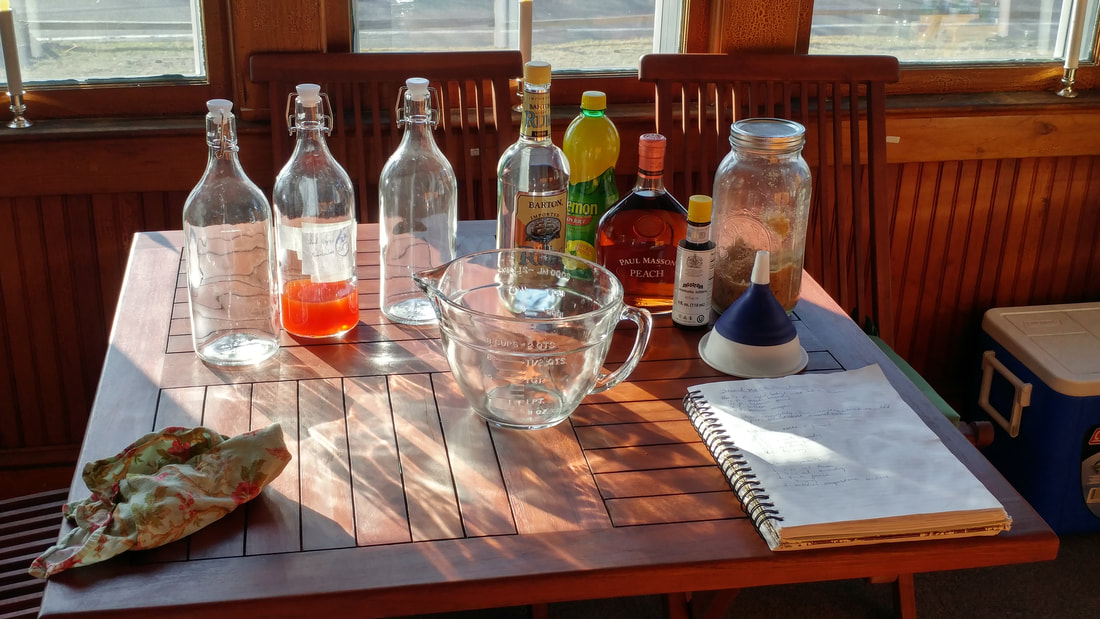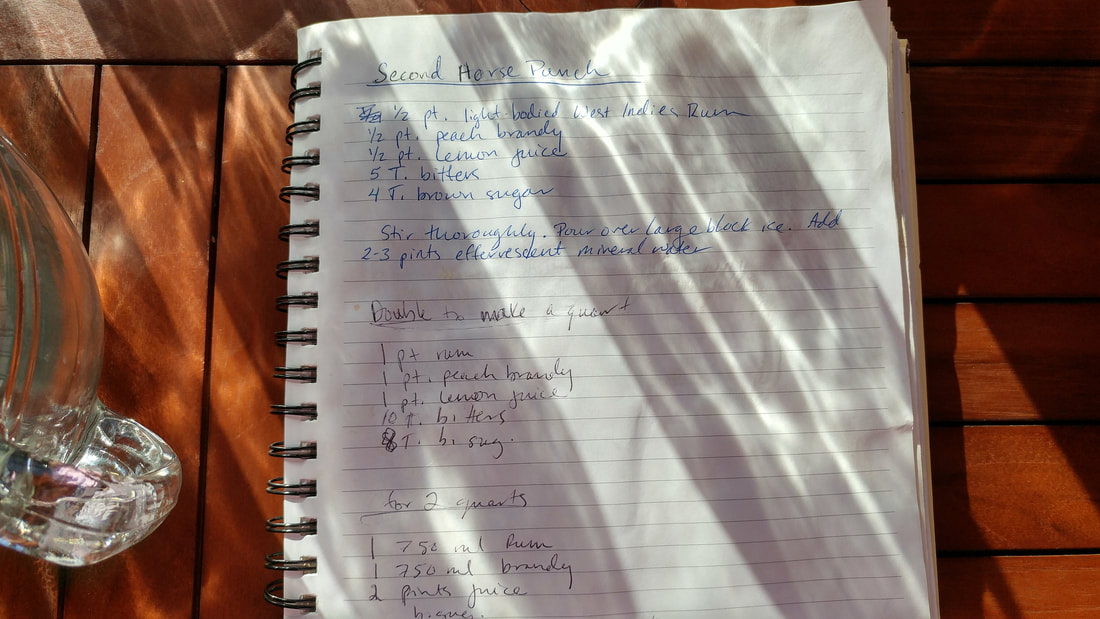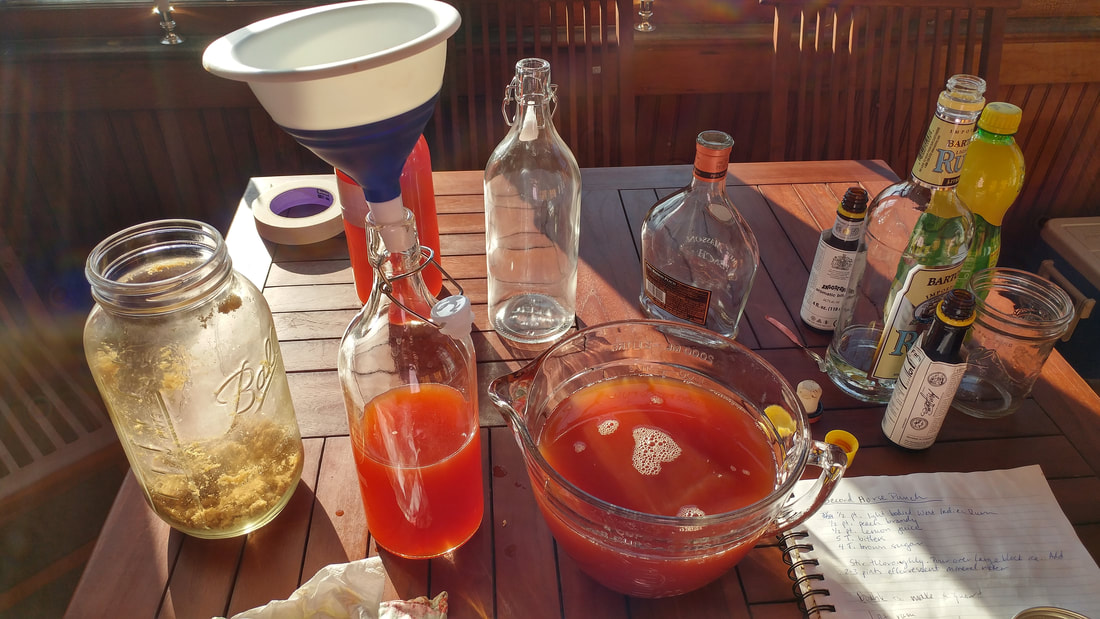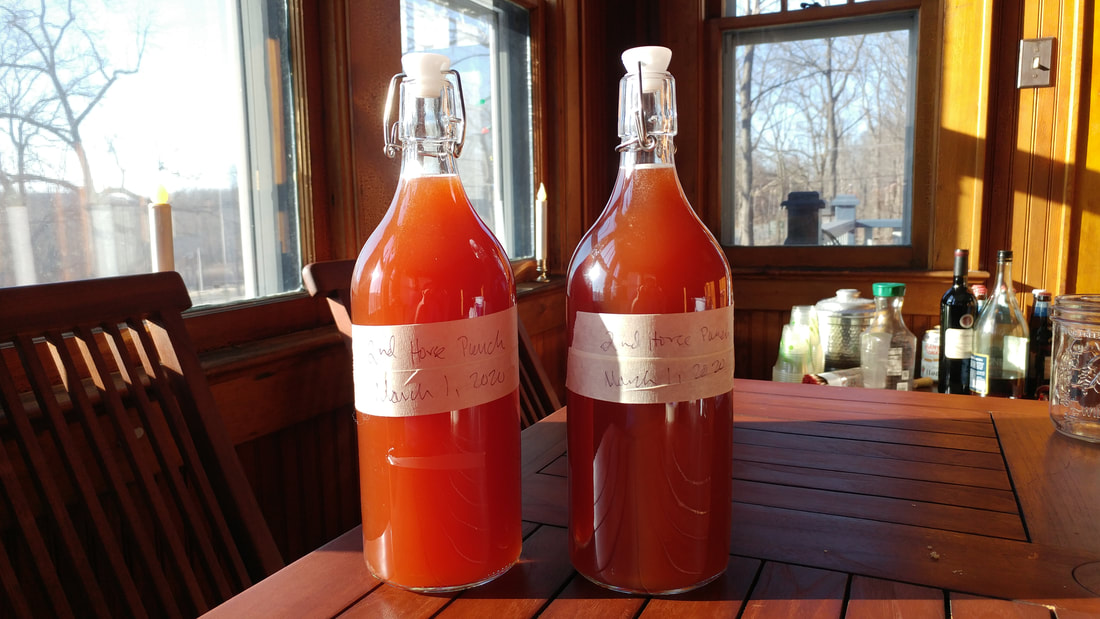|
The more I learn about food history, the more I realize that our modern concept of seasonal eating is a big wrong-headed. I've often prided myself on my delight in seasonal eats and trying to stick to what is available seasonally in my cooking. Meaning, no strawberries in December or tomatoes in March or pumpkin in June. And this in-the-moment feeling certainly was quite historic, particularly in spring and summer as waves of produce came to be eaten. However, historic cooks did a great deal of preserving throughout the year, especially in preparation for the winter holiday season. From pickling young walnuts in June, making cherry bounce in July, and starting the holiday fruit cake in August or September, canning and drying weren't the only food preservation activities going on, and many happened year-round. Of course, I'm not much of a canner or jammer, and I find the easiest way to preserve involves alcohol. Even though (ironically) we don't do a great deal of drinking in our house, having something other than beer and wine at a party is delightful, and punch is one of the best ways to showcase an interesting beverage for a crowd. As some of you may be aware, we plan a huge holiday party every year (hosting between 20 and 40 people), and Second Horse Punch has been a staple since the beginning, starting 10 years ago. We got the recipe from a friend, who works at another 18th century historic site. The original recipe reads thusly: ½ pint light-bodied West Indies Rum (a.k.a. light Puerto Rican or Cuban) ½ pint peach brandy ½ pint lemon juice 5 tablespoons bitters (Angostura is about the only kind left and this recipe uses about half a bottle) 4 tabelspoons brown sugar Stir thoroughly. Pour over a large block of ice. Add 2-3 pints effervescent mineral water. So what's with the name? It was supposedly invented by the Second Lighthorse Brigade and a rusty stirrup added to the punch purportedly improved the flavor. We are ginger ale addicts in our house, and the added sweetness is very nice - I think if you used mineral water (or sparkling wine) as the original called for, you would taste the alcohol too much. And to be honest, the best Second Horse Punch goes down so smoothly you don't realize how much you've downed. Although our ratio is 1:2 Second Horse Punch to ginger ale, the gentleman who gave us the recipe does a 1:1 ratio. That's a bit too strong for us! The key to a good Second Horse Punch is to let it age. The longer, the better. At minimum three months, preferably up two years. The longer it ages, the smoother it becomes. But, if you're going to let it age for that long, be sure to store it in glass. Quart mason jars are fine, if you don't have bottles. Our first big batch is actually in an old green glass wine jug. Second Horse PunchHere is our quadrupled recipe, which makes 3 quarts (not two, like my handwritten recipe says - I've since corrected it). 1 quart white rum 1 quart peach brandy 1 quart lemon juice 16 tablespoons brown sugar 2 bottles angostura bitters (which is actually only 16 tablespoons, not 20, but that's okay) Mix well - I recommend adding the brown sugar first - and pour into glass jars for storage. Label with the date so you know when best to mix it up for a delicious, not-too-sweet, spicy, delicious party punch. If you don't want to make 3 quarts, you can cut the recipe in half and use a pint mason jar for your measuring (which I did, but twice, because I didn't have a big enough pouring bowl). To make the finished punch, mix one part Second Horse Punch with two parts ginger ale and serve in a big punch bowl over ice. But only after you've let it age in a dark, cool place for at least 3 months! If you make some now, it should be quite nice by Christmas. And, as always, if you liked this post, consider becoming a member or joining us on Patreon. Members and patrons get special perks like access to members-only content.
0 Comments
Your comment will be posted after it is approved.
Leave a Reply. |
AuthorSarah Wassberg Johnson has an MA in Public History from the University at Albany and studies early 20th century food history. Archives
July 2024
Categories
All
|





 RSS Feed
RSS Feed